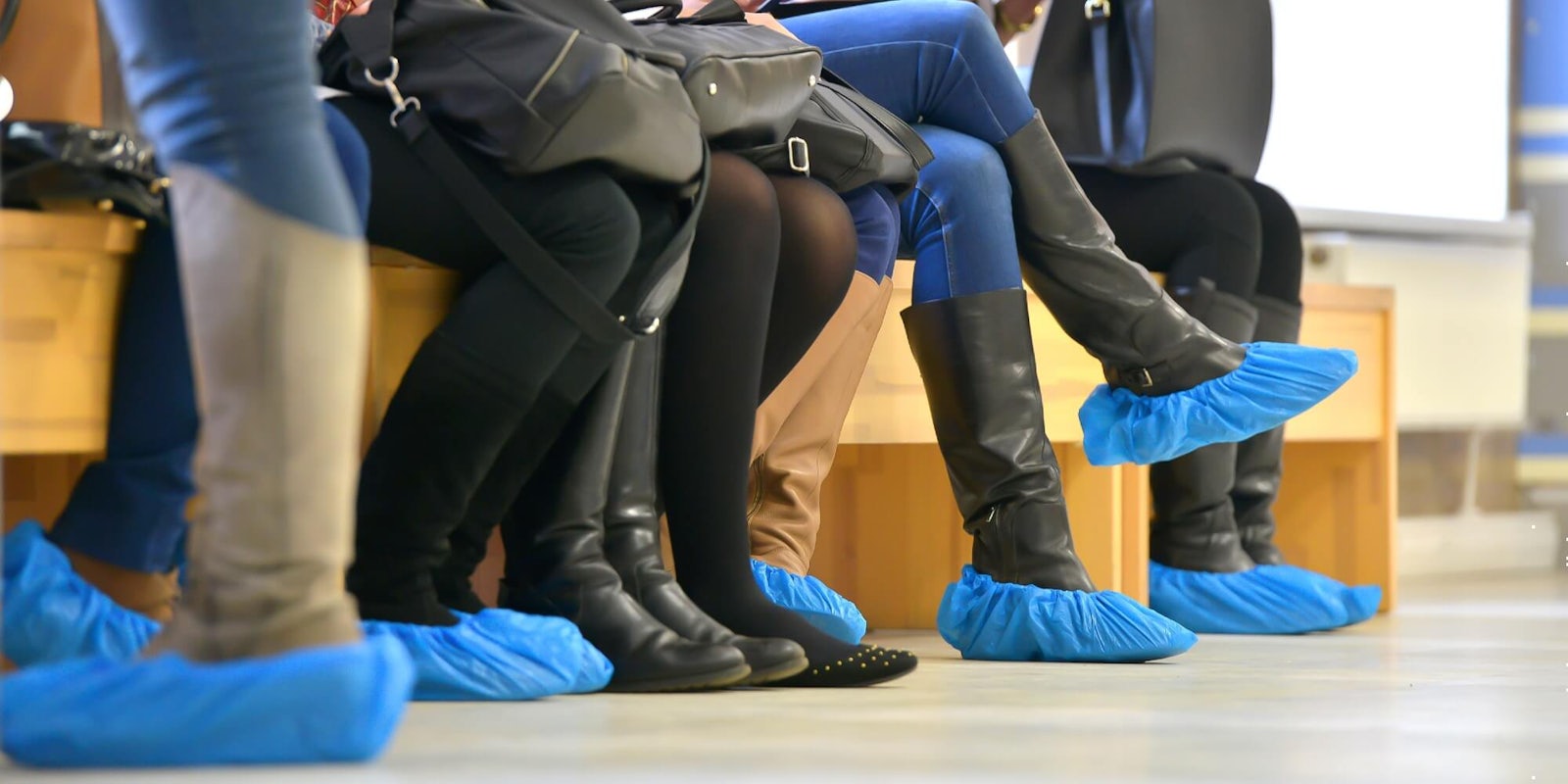As the coronavirus continues its worldwide spread, people everywhere are doing their part to flatten the curve.
Thus far, that has entailed social distancing and the use of a face mask in public. But according to a recent update from the Centers for Disease Control and Prevention (CDC), the virus may be able to reach farther and spread more easily than initially assumed. Here’s what we know so far about the spread of coronavirus via shoes.
Can shoes spread COVID-19?
One of the big rumors swirling online is that coronavirus can spread via the soles of your shoes. The CDC recently put out new information indicating that these initial findings do, in fact, have legs. In an April 10 report, the institute explained that testing on the shoes of medical staff indicates that the virus can be tracked via footwear.
The study also pointed to a larger-than-initially-thought contamination range. While the CDC still advises that people remain 6 feet apart, the article notes that the virus was detected in the air for up to 4 meters. That’s more than 13 feet.
But according to Don Schaffner, a food microbiologist at the School of Environmental and Biological Sciences at Rutgers University, who spoke to the Philadelphia Inquirer, it’s unlikely that non-medical professionals are tracking the coronavirus indoors through their shoes.
Can I spread COVID-19 through my shoes?
The coronavirus can spread via shoes. But, the CDC study focused on medical staff and hospitals, rather than locations commonly walked by the general public.
In intensive care units and general hospital wards, coronavirus-infected patients frequent rooms and hallways. Floor swabs from the study indicated that the particles and droplets floating in the air eventually sank to the floor. As hospital staffers traversed the area, their shoes picked up the virus coating the floor and continued its spread. Swabs done on the shoes of doctors, nurses, and others indicated that the shoes of medical staff, in particular, can serve as carriers.
That, again, doesn’t mean that everyone should be concerned about their shoes.
The CDC does advise anyone who’s recently visited a ward housing COVID-19-infected patients to wash their shoes before heading out.
Beyond that, as the Miami Herald notes: Some health professionals recommend to “wipe down work shoes with disinfecting wipes and to have a separate pair to put on before entering your home.”
And according to the Huffington Post, plastic shoes can carry an active virus for days. As it wrote in late March:
…shoes can be a potential source of contamination, according to family practitioner Georgine Nanos, especially if they’re worn in heavily populated areas (in grocery stores, on mass transit, etc.) and in workplaces. “As of today, we believe coronavirus can live on surfaces for up to 12 hours, potentially longer,” Nanos said. “And this definitely includes shoes.”
How far can the virus spread in the air?
The CDC report also indicated that the potential transmission distance of coronavirus in the air may be far larger than initially thought. The CDC currently recommends that everyone maintain a 6-foot distance from anyone they don’t share a home with. The new data points at a transmission radius more than double this recommendation.
Again, the CDC’s tests were all conducted in a hospital with COVID-19-infected patients. Rooms and hallways with worse ventilation consistently held higher percentages of contamination. That means that the data is not representative of the air outside. When traversing well-traveled buildings and halls, however, you might want to keep your distance.
What else did the CDC study find?
The study also considered swabs from a number of consistently used objects. Computer mice, trash cans, handrails, and doorknobs, to name a few, were all carriers for the virus. The article concluded that the air and surfaces of contaminated areas, in particular hospital wards, are riddled with contagion. Adequate personal protective equipment is one of the only things that will prevent its spread in these high-risk areas.
But these measures are for people with daily direct contact with infected people.
The world continues to research how this disease spreads through humans, and this data is subject to change. So remember: handwashing, disinfecting frequently used surfaces, wearing a face mask, and social distancing remain key protections against COVID-19. Being mindful of where your shoes have been and removing them at the door when you get home? Not a bad idea either.
READ MORE:
- Reddit’s ‘Memonavirus’ event shows how quickly infection spreads
- ‘Red Dawn’ emails show experts wanted coronavirus social distancing much earlier than Trump recommended
- Conspiracy theorists are now filming hospitals to ‘prove’ coronavirus is a hoax
H/T KRON4


